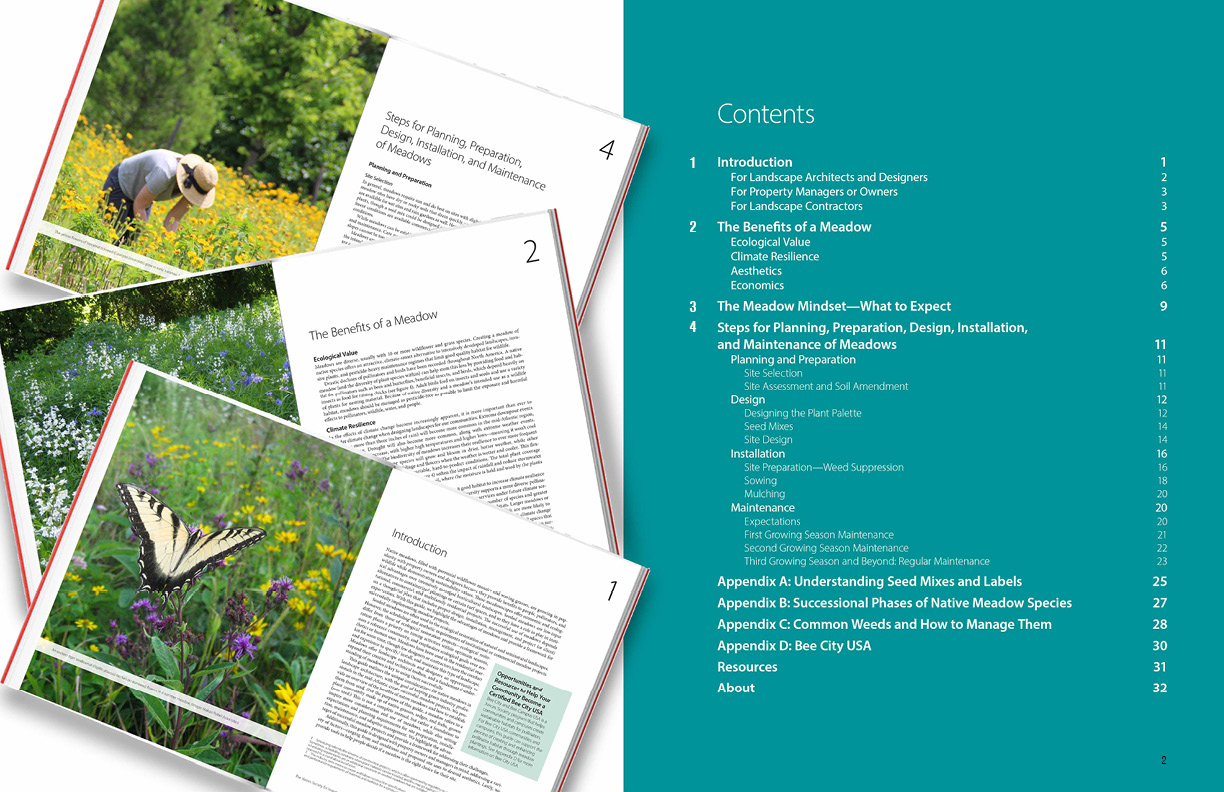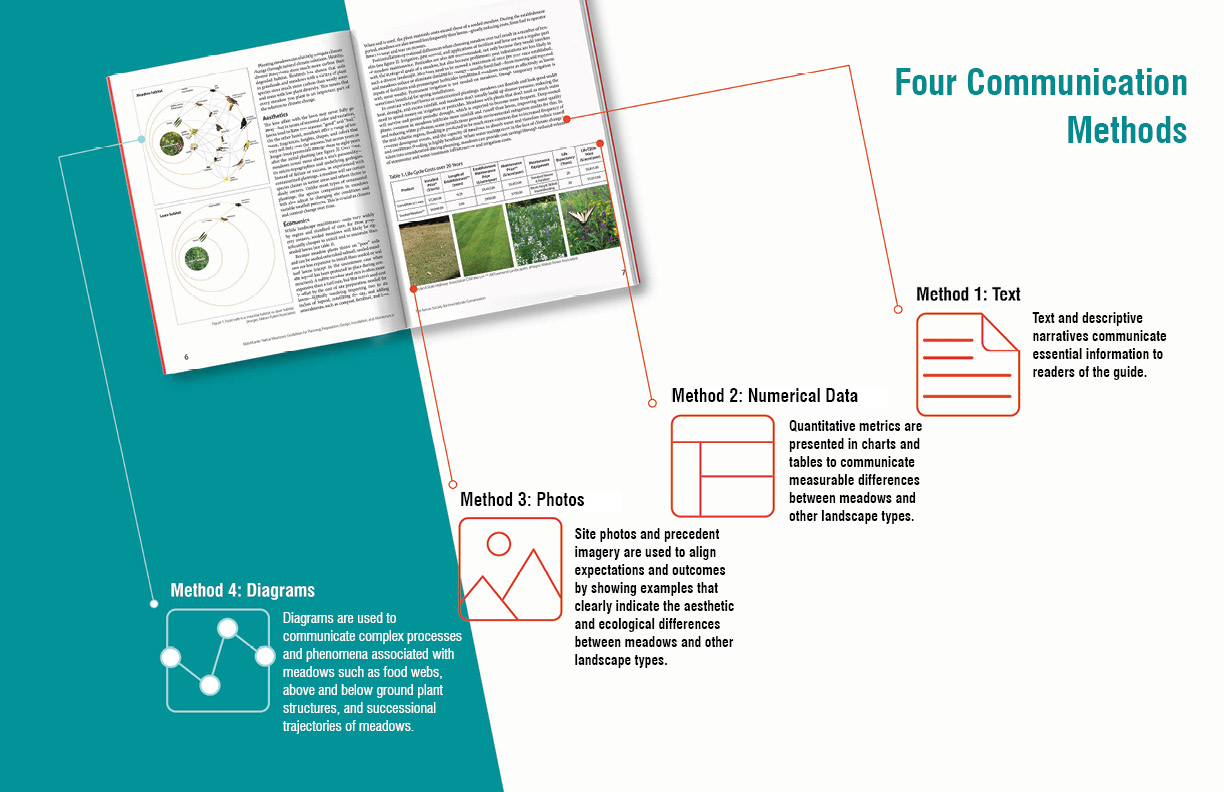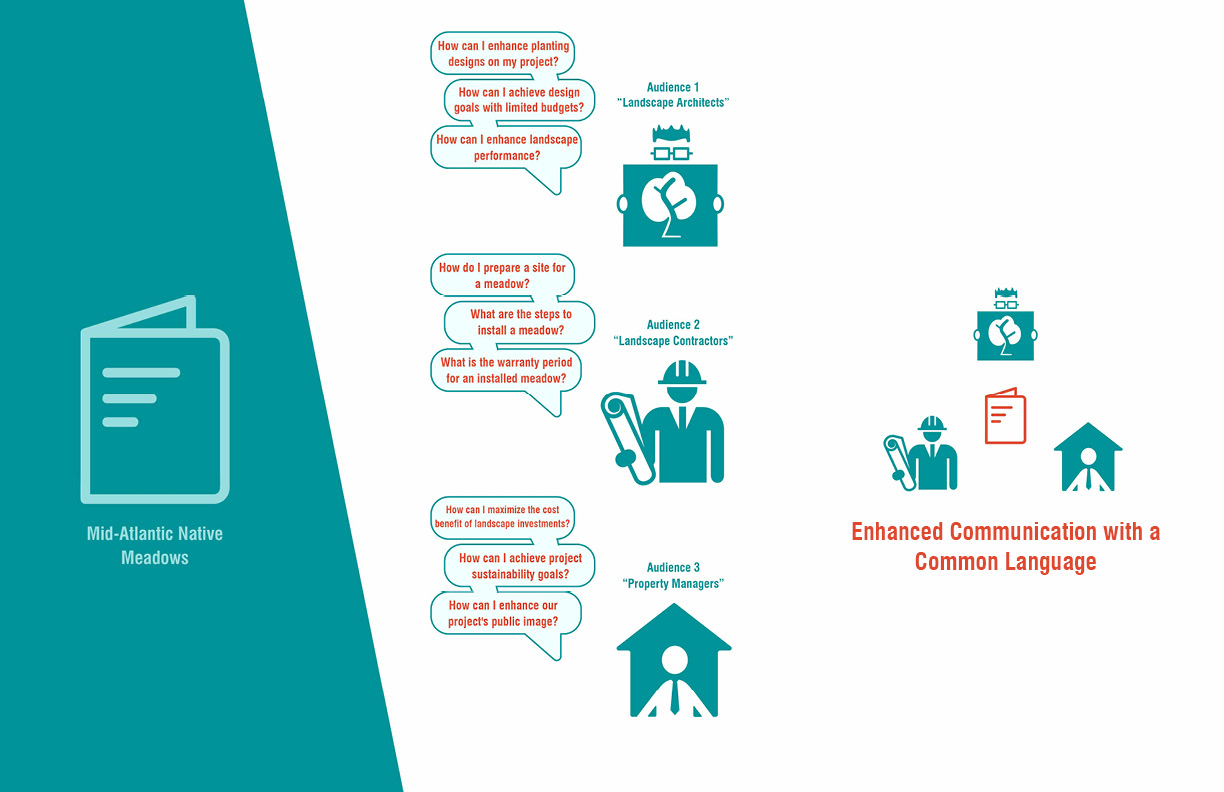Meadows are a low-input, high impact, resilient landscape typology that provide valuable ecosystem services through the biodiversity of their plant communities. The Mid-Atlantic Native Meadows guide provides a comprehensive introduction to designing, installing, and maintaining native meadows by addressing the unique needs of the multiple stakeholders involved in designing and maintaining constructed meadows.
Produced in partnership between the Landscape Architect and a Conservation Organization, this guide presents native meadows in designed landscapes for institutional and commercial projects as providing valuable pollinator and wildlife habitat and as a low-maintenance alternative to intensively managed horticultural landscapes.
This guide fills a considerable knowledge gap on designed meadows in institutional, commercial, and multi-family projects and argues for their ecological, aesthetic, and economic benefits in these project types. This guide demonstrates how a collaboration between ecologists and landscape architects enhances communication and expands audience reach across disciplines and stakeholders. The guide also promotes communication and collaboration between landscape architects, contractors, property owners, and managers, by establishing clear expectations and requirements for successful native meadows. Native meadows, filled with perennial wildflower mosaics and waving grasses, are growing in popularity with property owners and designers for their benefits to people, pollinators, and wildlife while demonstrating sustainability values. Native meadows, within this guide, are plant communities made up of native grasses, sedges, and forbs, grown from seed. Seeded meadows are low-input alternatives to traditional intensively managed horticultural landscapes such as turf spaces that have a role to play in institutional, commercial, and multi-family projects. This guide addresses a communication gap in the available literature on meadow maintenance within these types of designed spaces.
The challenges faced by clients from institutional and commercial landscape architecture projects are quite different from challenges faced in the agricultural and restoration industry – from the equipment available to landscape contractors to timing seeding in a construction schedule. Institutional and commercial meadow projects within peri-urban and urban spaces require a different framework for successful implementation, as they have different aesthetic, ecological, and economic needs compared to meadows for agricultural or restoration purposes. This guide is geared toward these needs and is tailored specifically to fit within construction scheduling and the equipment typically used by landscape contractors and owned by institutional maintenance staff. It provides an overview of the benefits, what to expect, and an introductory manual to planning, preparing, designing, installing, and maintaining native meadows. The guide is not a complete manual to meadow maintenance but is intended as a foundation to communicate and consider the use of meadows, highlighting the advantages of successful meadow projects and providing a framework for addressing challenges.
The Mid-Atlantic Native Meadows Guide is an accessible introduction to a fundamental understanding of meadows and was brought to fruition purposely through interdisciplinary engagement. Collaborating with ecologists (including native plant specialists, pollinator specialists, and climate change specialists) at the Conservation Organization ensured that these meadow maintenance strategies protect and support pollinators and wildlife. This guide provides a communication bridge across disciplines, clearly presenting subject matter expertise to specify, install, and maintain resilient meadow landscapes. By de-mystifying meadows for green industry professionals, landowners and property managers, and landscape contractors we hope to open a larger conversation between designers, ecologists, and property stewards on creating sustainable and legible meadow landscapes that provide high aesthetic impact, cost effective implementation, and critical habitat for pollinators and wildlife.

CONTENTS | The Mid-Atlantic Native Meadows guide is organized in four chapters, Introduction, The Benefits of a Meadow, The Meadow Mindset – What to Expect, and Steps for Planning, Preparation, Design, Installation, and Maintenance of Meadows.

COMMUNICATION STRATEGY | The guide utilizes four major communicating methods: text, numerical data, photographs, and diagrams.

COMMON LANGUAGE | The guide provides a common language for each of the intended audiences, enhancing communication each other’s role, skillsets, and expectations in a designed meadow project.
THE VALUE OF A MEADOW | Meadows provide ecological, economic, and aesthetic value and are a resilient landscape typology for climate change. Incorporating high plant diversity ensures success in a range of conditions, making meadows a reliable landscape type for ecological, economic, and aesthetic purposes.
DESIGNING A MEADOW | Design goals when selecting plant species for a meadow include color, texture, composition, and seasonality. Considering aesthetics and implementing Joan Nassauer’s “Cues to Care”, distinguishes native meadows designed by landscape architects from meadows installed for agricultural and restoration purposes.